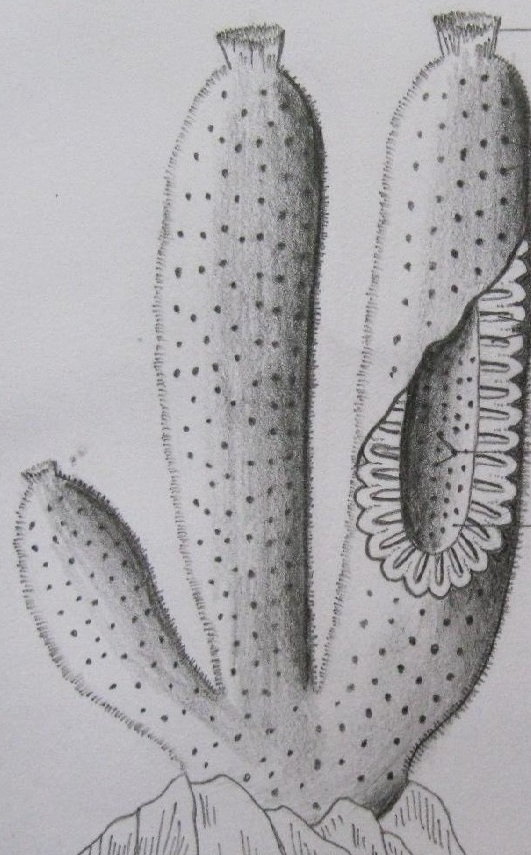Classification
Phylum – Porifera – pore bearing animals,diploblastic with cavity spongocoel.
Class – Calcarea – Spicules calcareous, canal system asconoid/syconoid /leuconoid type
Order – Heterocoela – Canal system syconoid type.
Genus- Sycon (Scypha)
Habitat- found in shallow water,Marine.
Habit- Clustered, more independent. Small buds may occasionally appear at the base of mature specimens.
Characters-
- Body – vase like, more or less separate at the base.The base is attached to the substratum and the distal free end bears an opening called osculum.Osculum is surrounded by large monoaxon spicules, forming a collar around it.
- The external surface reveal the presence of numerous pores called ostia,these are incurrent pores permitting entry of water.
- Due to folding of the body covering numerous canals are formed called incurrent canals and radial canals.
- Canal system of syconoid type stage I. Course of water current is Ostia > incurrent canals > prosopyles >radial canals >apoyles >spongocoel > osculum >outside body. Choanocytes are confined to radial canals.
- Incurrent water through canal system facilitates respiration, nutrition and excretion.
- Internal cavity is spongocoel.
- Skeleton of calcareous spicules which are monoaxon, triaxon and tetraxon. Dense spicules almost hide the ostia.
- Animal is bisexual.
- Asexual reproduction (a) by budding under favourable conditions (b) by reduction bodies under unfavourable conditions.
- In sexual reproduction fertilization is internal but cross due to
protogynous condition. - Development is indirect through amphiblastula larva.
- High power of regeneration is seen.

good content….
LikeLike
Sycon is
LikeLike
Another
LikeLike
Tell me species of this sycon
LikeLike